For a long time in the past, the life cycle of a technology may last for several generations. Major innovations are rare and will last for a long time. Any emerging technology may still be in use when your grandson's grandson is born. But this is over.

Innovation gives birth to innovation. After tens of thousands of years of invention and creation, we have reached such a degree that new technologies are eliminated almost at the same time, at least on the historical time scale.
The evolution of this technology is perhaps most evident in entertainment. On the music carrier, from the original black glue, 8-track cassette tape to cassette tape, to CD and current digital exercise. Similarly, movies transition from VHS and Betamax to CD, to DVD, to BluRay, and finally to digital. History shows that it is moving somewhere, and very fast.
Technology is developing unstoppably, which often means that the technology that used to be the mainstream of daily life will be covered by the sand of time. However, some technologies can still find a way to open up a lasting market long after they should have disappeared. Foreign technology media slashgear shared the old technology that still has a market at present.
Floppy disk
Floppy disks were once the standard format for storing data or installing and running software. These functions eventually transition to internal or external hard drives, CD ROMs and digital downloads, while floppy disks enter museums and landfills. Today, the most enduring legacy of floppy disks is the shape of the save icon on your computer.
Maybe you think so.
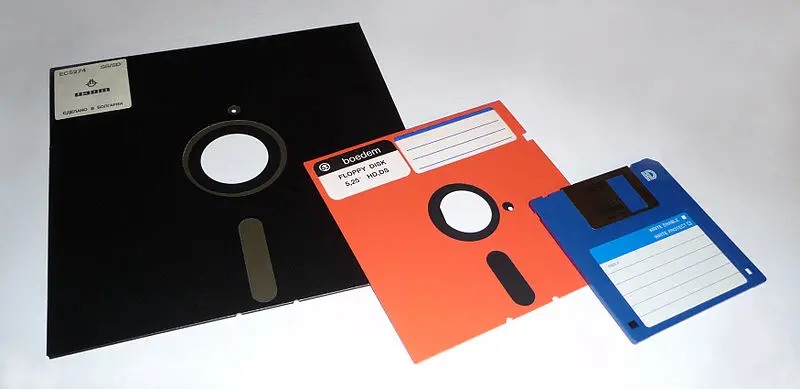
Picture from Wikimedia
Believe it or not, floppy disks are still used in some corners of our world, where, for some reason, time has not touched it. With the development of commercial market, ordinary consumers may not have encountered floppy disks for decades, but private enterprises are another story.
For these enterprises, innovation is not important, reliability is the most important. That's why ATMs and some medical devices still use outdated floppy disk systems.
Even some governments are still using floppy disks and may continue for some time. As input explained, some departments of the Japanese government are still using this technology, although the last new floppy disk was produced in 2011.
In the United States, the Department of defense used floppy disks to control its nuclear arsenal for more than 50 years, and only recently phased out in 2019, citing reliability and safety as the reason for its persistence for so long.
Pager (BPR)
Before mobile phones became the preferred means of communication, pagers were the ultimate way to contact someone when they were away from a telephone connection. Pagers can communicate wirelessly over huge distances, which even cordless phones can't do, allowing you to send short messages and request contact.
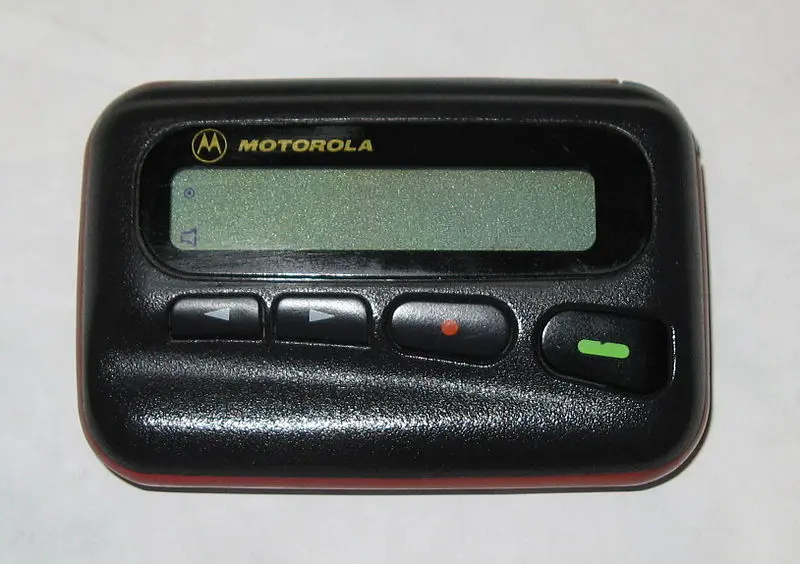
Picture from Wikimedia
However, when mobile phones became popular, the demand for pagers disappeared, at least for most people. Now you can contact someone almost anywhere at once, good or bad. If you don't need to respond immediately, a text message can replace the request to call back at your convenience. However, for many doctors working in hospitals, pagers have never fallen out of favor.
As explained in a paper published in the Journal of hospital medicine, although mobile phones do occupy some places for in-hospital communication, about half of doctors often used pagers in 2017. In fact, they are the most common way of communication. This is consistent with an informal survey of more than 1000 hospital staff in 2019, which confirmed that about half of doctors are still using pagers.
The reasons listed for adhering to the use of pagers include: being able to separate work life from family life, avoiding checking the view of the phone for personal reasons, and the reliability of pagers. They can work even in areas with limited mobile phone coverage in the hospital.
Satellites and space probes
Sending objects into space is undoubtedly one of the most technologically impressive things in human history. We have sent remotely controlled Rovers to the surface of other planets and built orbiters around the outer surface of the sun.
Modern spacecraft exist at the forefront of our technology. However, although the technology possessed by satellites and detectors only a few decades ago was sufficient at that time, its performance is very poor by today's standards. As explained by real clear science, the memory of an ordinary smartphone is one million times that of an Apollo guided computer, and its processing power is 100000 times that of an Apollo guided computer.

Image from NASA
Despite the shortcomings of the technology they use, some outdated space probes and satellites are still doing impressive things decades after launch. Voyager one and two, the most distant human made objects in history, have only about 68KB of on-board computers.
This did not prevent them from madly surpassing their original mission. 45 years after its launch in 1977, the two Voyager spacecraft are still in operation, sending data from about 14.5 billion miles to the earth, or 156 times the distance from the earth to the sun.
Closer to home, the vanguard 1 satellite continues to break the record for the oldest orbiting satellite. It was launched in 1964, six months later than Sputnik, and is still in operation. I guess. Although it no longer transmits data, it is still in orbit and is likely to continue for hundreds of years.
The oldest digital computer still running
The world's oldest digital computer is legendary, and it's not over yet. Harwell dekatron, built in 1951, was originally used at the Atomic Energy Research Institute in Oxfordshire. It performs digital multiplication, replacing the work previously done by adder. Although it may take ten seconds to spit out an answer, it can work reliably for hours or days at a time, which was unheard of at that time.
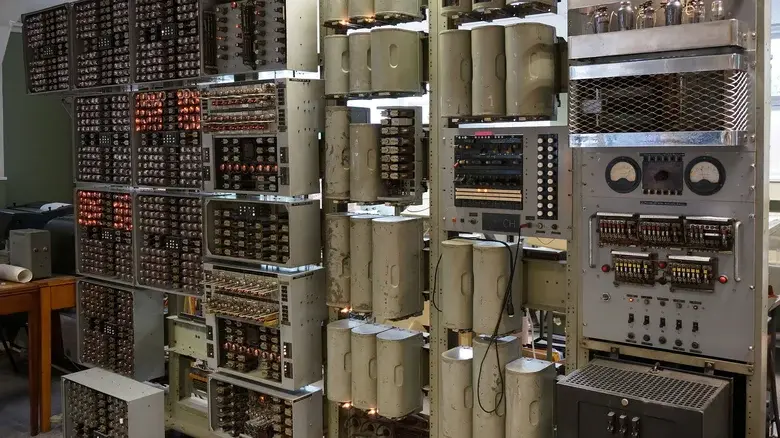
Picture from Wikimedia
By 1957, only six years after its completion, it was eliminated and faced the risk of demolition. Instead, it was offered as a teaching tool to Wolverhampton and Staffordshire Technical College, where it was renamed Wolverhampton computing teaching instrument, or witch.
It was used until the 1970s, when it was donated to a museum. Today, it lives in the National Computer Museum in brecelli Park, where after three years of restoration efforts, it has restored its previous glory and all functions.
Therefore, Harwell dekatron has once again become the world's oldest functional digital computer, and literally reminds people of the symbolic small scale of computers.
Dial up internet access
If you are an Internet user of a certain age, you may remember a series of prompt sounds and grinding sounds when connecting to the Internet. For many people, this is a background music for exploring the beautiful youth of the new world network.
At the beginning of the 21st century, dial-up connection was largely replaced by broadband, and a quieter and faster Internet connection appeared in the world. You can forgive yourself for thinking that dial-up Internet has been on the road of dinosaurs, but you are wrong.
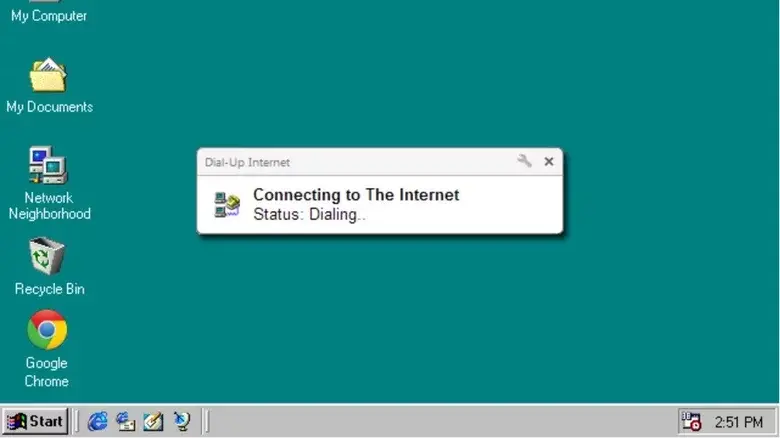
Images from Google
AOL, once the largest name in the field of home Internet, still has 1.5 million customers by 2021. Many of them are using AOL advantage, which provides identity protection and technical support, but some of them are still surfing the Internet in the way of our generation.
AOL is not the only provider still offering dial-up services. NetZero, EarthLink, turbo USA and Juno also provide Internet connection through telephone line. As allconnect explained, the speed may be limited to 56 Kbps, and faster speeds need to be paid, but the price and availability are attractive to some consumers.
In fact, some vendors offer up to 10 hours of free dial-up connections per month. For users in areas where cable television or satellite Internet is not available, or users with financial restrictions, dialing provides a way to connect that they may not be able to obtain.
Public telephone booth
In the past, when you wanted to call your parents and ask them to pick you up at the mall, you had to go to the pay phone bank and put in 25 cents, or call collect if you spent all your change at the food Square. Like pagers, the emergence of mobile phones (usually sold in the grocery stores of these shopping malls) has largely eliminated pay phones.
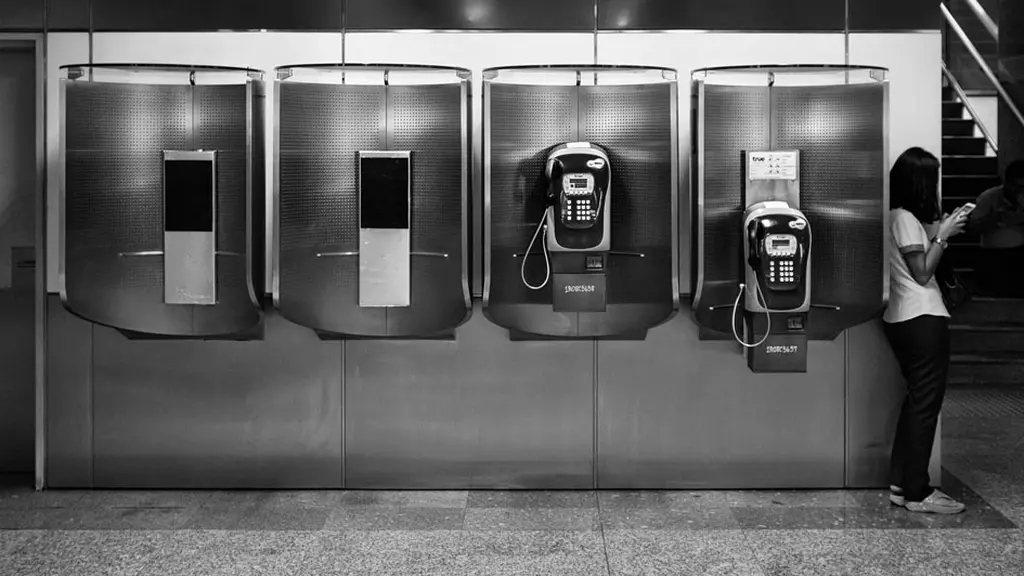
Picture from BM
Although millions of public telephones were distributed throughout the United States in the past, by 2018, the number of public telephones in the United States had dropped to about 100000. About a fifth of the remaining public telephones exist in New York, but they have found homes in other cities and non mainstream areas, such as camping sites and national parks.
Mobile service has become the main mode of telephone communication, but mobile signal can not cover all places. Companies that still operate public telephones say that the utilization rate will rise significantly when the mobile network may be paralyzed or overwhelmed after bad weather or natural disasters.
Vacuum tube
A wide range of technologies such as early computer, radio, television and telephone systems relied on vacuum tubes to do their work. Although they worked well at the time, they took up a lot of space and limited the amount you could have in the limited space of consumer electronics. Because of Moore's law, we need a more compact solution, and transistors play this role.

Picture from Wikimedia
As the engineering magazine explained, when the transistor was invented in 1947, the death of the vacuum tube was not far away. Transistors can do almost everything a vacuum tube can do, but they are much more dense and do not need to be replaced often.
However, vacuum tubes are still used in specific technologies when the power demand exceeds that easily achieved by semiconductors. Look inside the particle accelerator or nuclear magnetic resonance instrument and you will find that the vacuum tube is still working hard. In fact, you probably still have these vacuum tubes in your home.
The magnetron in your microwave -- the part responsible for generating radio waves that heat food -- is a vacuum tube. Every time you reheat a burrito or a cup of coffee, you have to thank this old technology.
Carbon paper
The English word "carbon copy" has become synonymous with something, but its roots can be traced back to carbon paper. When you "CC" someone in an email, you may also encounter an abbreviated version of it.
Carbon paper sandwiched between two sheets of plain paper allows people to copy original documents while writing or typing. It can save time if you need to make multiple copies of the same document, or if you only need one fax to keep your records.

Picture from Wikimedia
After some technological innovations, carbon paper is no longer favored. Carbon free transfer paper replaces its chaotic predecessors with paper coated with paraffin, carbon black and mineral oil. When pressure is applied, traces are produced by chemical reaction (through review inspiration). Later, low-cost scanners largely eliminated the need to make physical copies of documents while making originals.
Airship
Before the plane really takes off, the best and sometimes the only way to travel long distances in the air is by airship. In fact, the first airship took off more than 50 years before the Wright brothers realized their first powered flight.
Instead of using the physical principles of wing design to achieve lift, they use lighter gas than air to lift themselves into the air. Even after aircraft became the mainstream, airships were a common way of cross ocean travel that aircraft could not handle.
Today, only 25 airships are still in operation, mainly for advertising purposes. Although airship seems to be a slowly dying technology, this may be about to change.
As singularityhub explains, some companies are trying to restore airships as a method of passenger or freight transport. The next generation of airships can provide slower, more thoughtful, more comfortable and more cruise like journeys, rather than flying around the world.
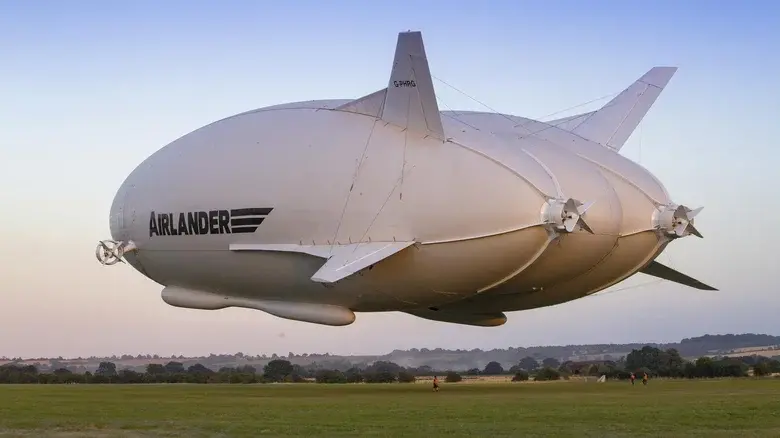
The picture is from ocean sky cruises
Ocean sky cruises plans to start providing airship flights from Svalbard to the Arctic in 2024. Passengers will get their own cabin and include all meals and drinks. The only drawback is that the list price is SEK 2 million, or about US $200000.
CRT TV
Modern TVs are flat and slim. They are usually installed on the wall without getting in the way. However, not long ago, due to the existence of space chaotic cathode-ray tubes, televisions were bulky. With the development of TV technology, CRT TV has been quietly replaced in consumers' homes, but they still exist in some corners of the world.

Picture from pxhere
Many common places, such as grocery stores and hospitals, have not replaced the TV connected to their closed-circuit security system, which means that when you leave the store or hospital gift shop, you are likely to find a granular version of yourself on CRT TV.
Video game city still uses CRT TVs to support some of their old games and street cabinets, either because they are self-contained and do not need to be replaced, or because these games are designed to work on this display technology. In fact, some old games actually look worse on modern TV or don't work at all.